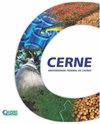Comparative RNA-Seq analysis of Betula platyphylla under low and high temperature stresses
IF 0.7
4区 农林科学
Q3 FORESTRY
引用次数: 0
Abstract
Background: Betula platyphylla Sukaczev is one of important tree species due to its ecological and economic value. It is a cold-tolerant tree species which also faces heat stress during summer. In the current study, RNA-Seq profiling of two-month-old B. platyphylla seedlings were conducted utilizing the MGISEQ-2000 platform. Results: In total, 856,347,961 clean reads were obtained from 26 RNA-Seq libraries. Totally, 822,552,820 reads were successfully mapped to B. platyphylla reference genome. Further, a total of 360 and 264 DEGs were discovered under cold and heat exposure, respectively, while a total of 104 DEGs were identified under both cold and heat exposure. It was found that several pathways including response to cold, response to heat, response to temperature stimulus, response to stress, lipid metabolic, jamonic acid and ethylene, even developmental processes were significantly enriched in GO enrichment analysis of cold and heat stress in biological process term. Several transcription factors (TFs), including MYB66, CBF2, bHLH96and bZIP7 take a pivotal role in response to temperature stresses. Furthermore, heat shock proteins were identified under cold and heat stress, respectively, suggesting these genes participate in reducing cold and heat stress detrimental effect by interacting with TFs or other genes related to abiotic stresses, chlorophyll and photosynthesis, osmoprotectants, and phytohormone as well. Conclusion: This study not only underlying B. platyphylla’ s molecular mechanism in response to temperature stresses but also provides candidate genes involved in response to temperature stresses.低温和高温胁迫下白桦的RNA-Seq比较分析
本文章由计算机程序翻译,如有差异,请以英文原文为准。
求助全文
约1分钟内获得全文
求助全文
来源期刊

Cerne
农林科学-林学
CiteScore
1.60
自引率
0.00%
发文量
2
审稿时长
6-12 weeks
期刊介绍:
Cerne is a journal edited by the Federal University of Lavras, Minas Gerais state, Brazil, which quarterly publishes original articles that represent relevant contribution to Forestry Science development (Forest ecology, Forest Management, Silviculture, Technology of Forest Products).
 求助内容:
求助内容: 应助结果提醒方式:
应助结果提醒方式:


